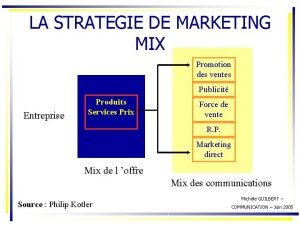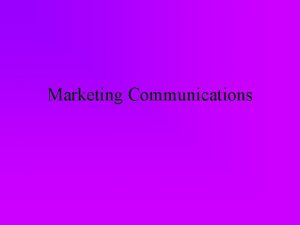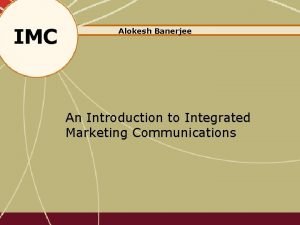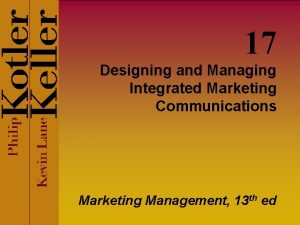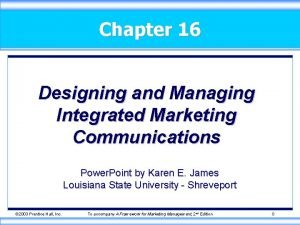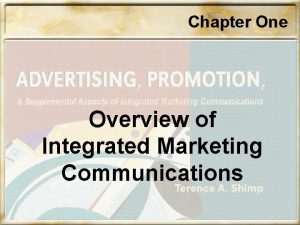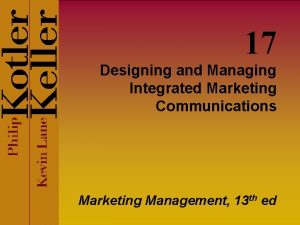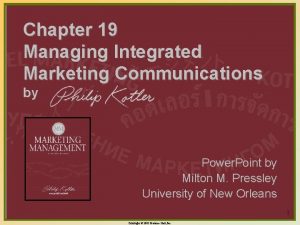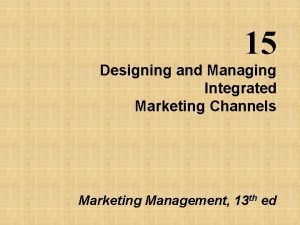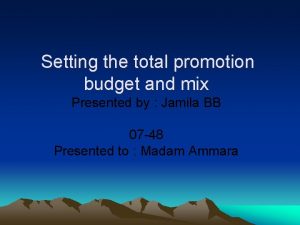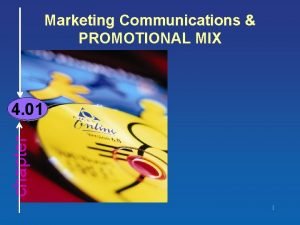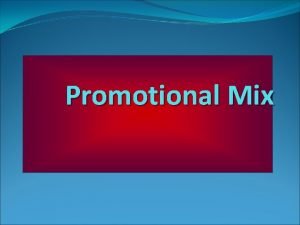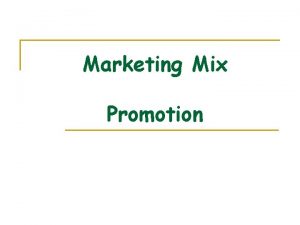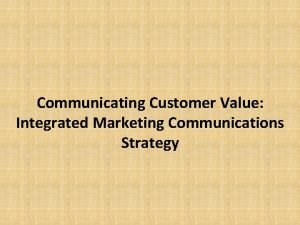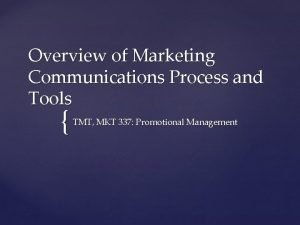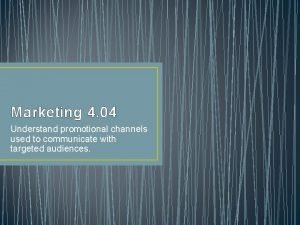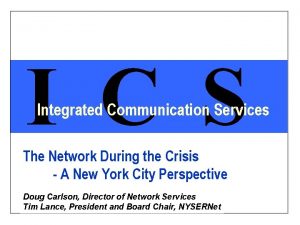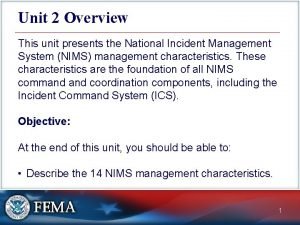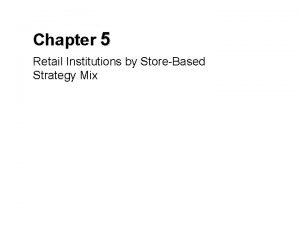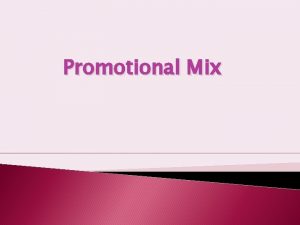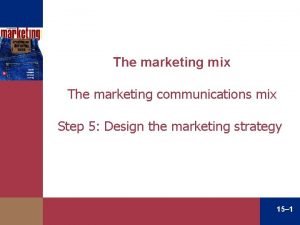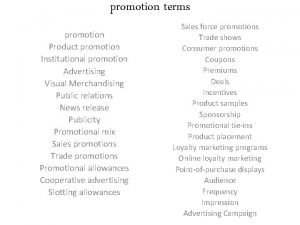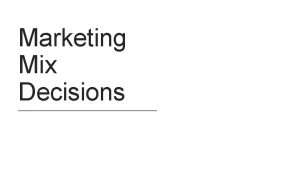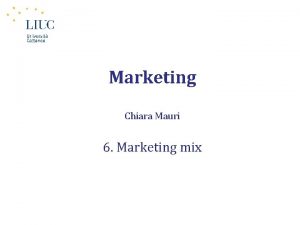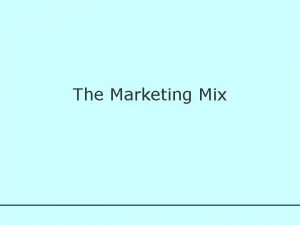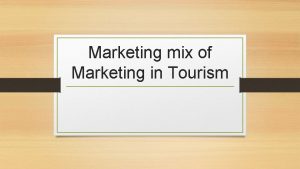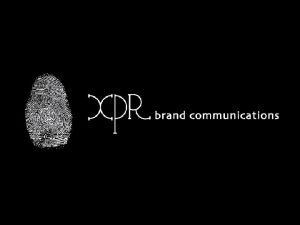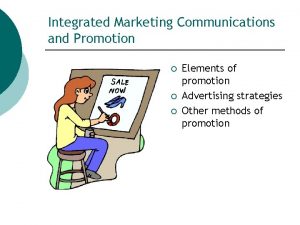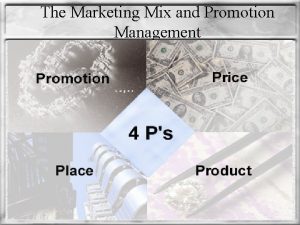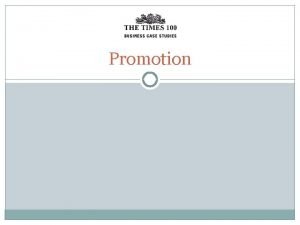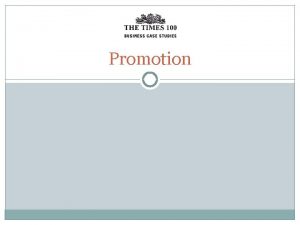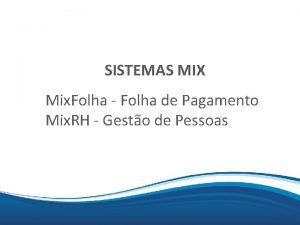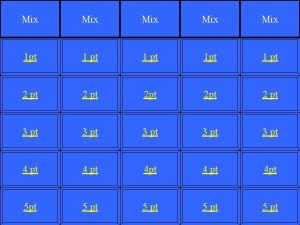Integrated Marketing Communications Strategy Marketing communications mix promotion





























- Slides: 29

Integrated Marketing Communications Strategy

Marketing communications mix (promotion mix) - the specific mix of advertising, personal selling, sales promotion, public relations, and directmarketing tools a company uses to pursue its advertising and marketing objectives.

Advertising - any paid form of non-personal presentation and promotion of ideas, goods, or services by an identified sponsor.

Personal selling - personal presentation by the firm’s sales force for the purpose of making sales and building customer relationships.

Sales promotion - short-term incentives to encourage the purchase or sale of a product or service

Public relations - building good relations with the company’s various publics by obtaining favorable publicity, building up a good corporate image, and handling or heading off unfavorable rumors, stories, and events.

Direct marketing - direct connections with carefully targeted individual consumers to both obtain an immediate response and cultivate lasting customer relationships -the use of telephone, mail, fax, e-mail, the internet, and other tools to communicate directly with specific consumers.

Elements in the communication process. 1. Sender 2. Encoding - the process of putting thought into symbolic form 3. Message - the set of symbols that the sender transmits

4. Media - the communication channels through which the message moves form sender to receiver 5. Decoding - the process by which the receiver assigns meaning to the symbol encoded by the sender. 6. Receiver

7. Response - the reaction of the receiver after being exposed to the message 8. Feedback - the part of the receiver’s response communicated back to the sender 9. Noise -the unplanned static or distortion during the communication process

Steps in developing effective communication 1. Identifying the target audience 2. Determining the communication objectives (what response is sought)

Buyer readiness stages - the stages the consumers normally pass through on their way to purchase, including awareness, knowledge, liking, preference, conviction, and purchase

3. Designing a message aida model- the message should get attention, interest, desire, and action

A. message content (what to say) 3 types of themes or appeals a. rational appeals - relate to the audience’s self interest(benefits)

b. emotional appeals - stir up either negative or positive emotions that can motivate purchase.

c. moral appeals - directed to the audience’s sense of what is right and proper.

B. message structure a. draw a conclusion b. present a one sided argument or two sided argument(strength and weakness) c. present the strongest argument first or last

C. message format headline, copy, illustration, and color

4. Choosing media channels of communication a. personal communication channels - two or more people communicate directly with one another, whether face to face, by telephone, by mail, or via internet

word of mouth influence personal communication about a product between target buyers and neighbors, friends, family members, and associates.

b. nonpersonal communication channels - media that carry messages without personal contact or feedback, including major media, atmospheres, and events.

5. Selecting the message source pertains to the person who will deliver the message(communicator)

6. Collecting feedback

Promotion mix strategies a. push strategy - calls for using the sales force and trade promotion to push the product through channels

b. pull strategy -calls for spending a lot on advertising and consumer promotion to build up consumer demand, which pulls the product through the channels

promotion budget a. affordable method - setting the promotion budget at the level management thinks the company can afford

b. percentage of sales method setting the budget at a certain percentage of current or forecasted sales.

c. competitive parity method setting the budget to match competitors’ outlays

d. objective and task method developing the budget by 1. Defining specific objectives, 2. Determining the task that must be performed, 3. Estimating the costs of performing these tasks. And the sum of these costs is the promotion budget.
 Product line and mix
Product line and mix Promotional mix definition
Promotional mix definition Imc mix
Imc mix Marketing mix promotion
Marketing mix promotion Product price place promotion
Product price place promotion What is encoding in marketing communication?
What is encoding in marketing communication? Integrated marketing communications definition
Integrated marketing communications definition Designing and managing integrated marketing communications
Designing and managing integrated marketing communications Integrated marketing communications examples coca-cola
Integrated marketing communications examples coca-cola Designing and managing integrated marketing communications
Designing and managing integrated marketing communications Overview of integrated marketing communications
Overview of integrated marketing communications Designing and managing integrated marketing channels
Designing and managing integrated marketing channels Designing and managing integrated marketing communications
Designing and managing integrated marketing communications Designing and managing integrated marketing channels
Designing and managing integrated marketing channels Total promotion company
Total promotion company Sales promotional activities
Sales promotional activities Factors affecting promotion mix
Factors affecting promotion mix Push vs pull promotional strategy
Push vs pull promotional strategy What is promotion mix
What is promotion mix Promotion mix
Promotion mix Promotion mix elementy
Promotion mix elementy Carefully blended mix of promotion tools
Carefully blended mix of promotion tools Marketing mix
Marketing mix Product marketing
Product marketing Advertising and integrated brand promotion
Advertising and integrated brand promotion Communication mix
Communication mix Communication channels in sales promotion
Communication channels in sales promotion Integrated communications ics
Integrated communications ics To avoid overburdening the incident command resources
To avoid overburdening the incident command resources Retail institutions by store based strategy mix
Retail institutions by store based strategy mix



